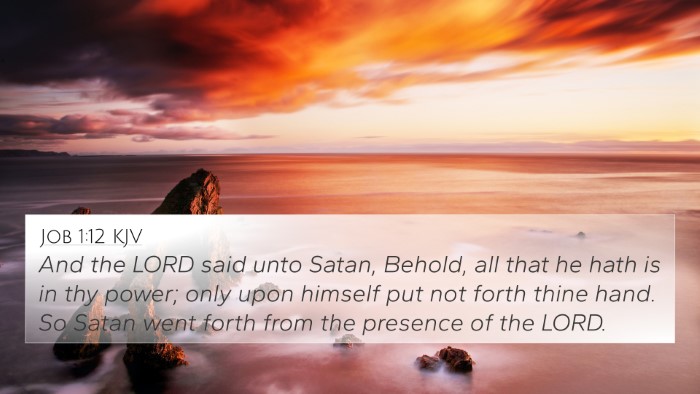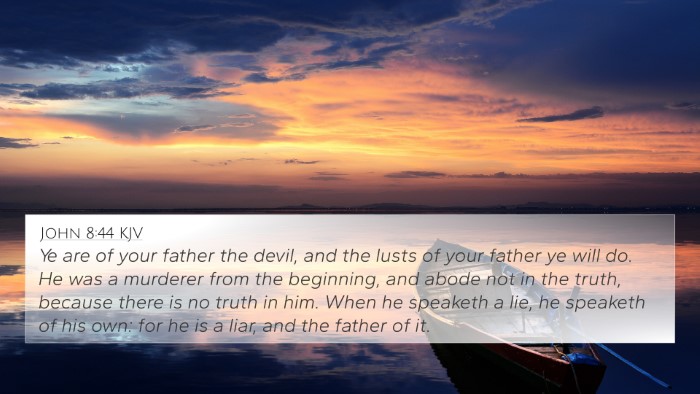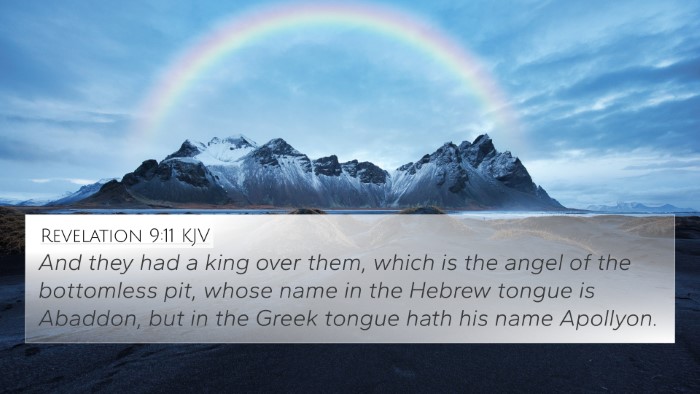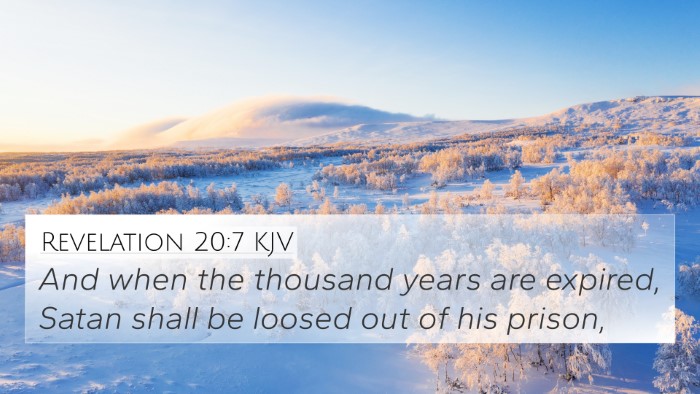Understanding Mark 5:13
Mark 5:13 states: "And forthwith Jesus gave them leave. And the unclean spirits went out, and entered into the swine: and the herd ran violently down a steep place into the sea (they were about two thousand;) and were choked in the sea."
Summary of Mark 5:13
This passage captures the moment when Jesus demonstrates His authority over unclean spirits. The unclean spirits, after being cast out, request to enter a herd of swine. The swine then react violently, leading to their demise in the sea, showcasing the destructive power of evil and the compassionate yet decisive action of Jesus.
Insights from Public Domain Commentaries
Matthew Henry's Commentary
Key Themes:
- Authority of Jesus: Henry emphasizes the undeniable power Jesus holds over the demonic realm. His command was immediate and effective, highlighting His divine authority.
- Symbolism of Swine: The swine represent impurity; their demise signifies a separation from what is unclean.
- Consequences of Evil: The violent end of the herd illustrates the destructive nature of sin and demonic influence.
Albert Barnes' Notes on the Bible
Key Observations:
- Justice of God: Barnes notes the just punishment of demons by allowing them to enter the pigs, illustrating the principle of reaping what one sows.
- Sign of Judgment: The event can be seen as a sign of judgment both on the swine and the unclean spirits, reinforcing the consequences of their evil.
- Impacts on Society: The destruction of the herd could symbolize the upheaval that evil brings into communities and individual lives.
Adam Clarke's Commentary
Key Explanations:
- The nature of Demons: Clarke discusses the nature of demons as agents of chaos. Their plea to enter the swine indicates their intent to continue causing harm.
- Symbolic Meaning: The swine's plunge into the sea can symbolize a complete and irreversible separation from holiness.
- Reactions from the locals: Clarke also hints at how the local citizens' reaction to this event sets the stage for a broader understanding of Jesus’ ministry in the region.
Cross-References for Deeper Study
This verse can be linked to several other scriptures that enhance understanding both thematically and contextually:
- Matthew 8:32: Shows a similar account where Jesus casts demons into a herd of pigs.
- Luke 8:33: Another parallel narrative that provides insight into the event.
- Mark 9:25: The authority of Jesus over unclean spirits is reiterated, emphasizing His power to exorcise.
- Isaiah 65:4: Discusses the unclean nature that Jesus confronted, linking to the relevance of the swine.
- James 2:19: Affirms the belief in spiritual beings and their recognition of Christ’s authority.
- Revelation 18:2: Symbolic destruction reminiscent of the fate of evil as represented by the swine.
- John 10:10: Contrasts the mission of Christ against that of the thief, i.e., demons.
Thematic Connections
This passage invites a comparative Bible verse analysis that connects evil spirits, destruction, and Jesus' authority. By analyzing these texts, one can explore:
- Authority Over Evil: How does Jesus' authority in Mark 5:13 parallel His authority in other New Testament accounts?
- Symbolism of Swine: What do pigs and their actions convey about Jewish purity laws and the portrayal of sin?
- Impact on Community: How do the responses of the townspeople to the events in Mark 5:13 reflect their understanding of Jesus and His mission?
Using Cross-References in Bible Study
When studying scripture, it is beneficial to use tools for Bible cross-referencing to identify connections between different verses. Here are some methods and tips:
- Identify Themes: Look for common themes in various passages to gain a deeper understanding of biblical teachings.
- Use a Bible Concordance: This resource can help track words and concepts through the Bible.
- Methodical Study: Consider using a cross-reference Bible study guide to systematically analyze scripture.
Conclusion
Mark 5:13 serves as a pivotal moment revealing the power of Jesus over the spiritual realm, while also providing rich themes of purity, judgment, and community impact. By exploring this verse through various commentaries and cross-referencing it with other biblical texts, one can achieve a more comprehensive understanding of its significance in the Christian faith.
For a comprehensive Bible study, learning how to use Bible cross-references can create a more profound understanding of the Scriptures and their interconnectedness.











